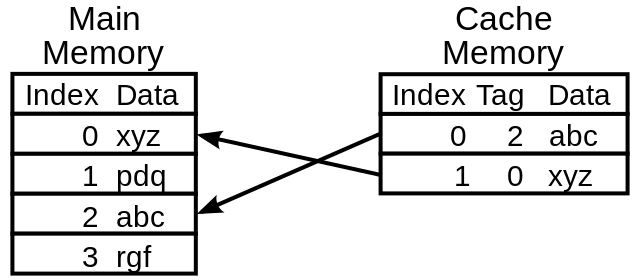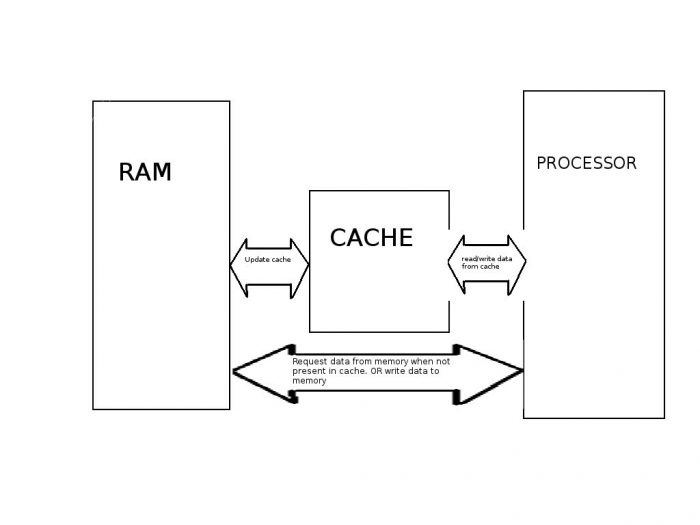
In our technology inundated world, we are exposed to a lot of tech-jargon that many people do not necessarily understand. One word you may hear frequently but not know the meaning of is “cached data.”
In a nutshell, cached data is simply information from a website or app that is stored on your computer, smartphone, or tablet. Cached data is stored on your machine so that the next time you access the website or app, you will not have to retrieve the information again. In other words, cached data are bits of information stored on your device that allow you to save on loading times when pulling up a website. If your device did not store cached data, then you would have to separately retrieve the information each time you access the web or app. Caching is practically useful because they allow you to save time while searching and retrieving information from a database.
For example, whenever you visit a website, you are using your web browser to request and assemble the page from information in the website’s server. The server has all the site information, its images, layout, text, etc. For the average webpage, it takes about 100 requests to completely build it. Your computer might save the layout of a website when you visit. That way, the next time you visit the website, your computer already has information about its layout and does not need to get that info from the site itself. Without any kind of caching, the computer would have to repeat those 100 individual requests every time you visit the website. Caching solves this problem by storing a copy of the webpage in a different easily accessible location.
Your computer can also use cached data to do some tasks automatically without input from the user. Many internet browsers nowadays have the option to save passwords and other user credentials in cache memory. Saving passwords and other user credentials make it so users do not have to enter in the information every time they log into a site. The basic function of cache memory is to save data that is frequently used for ease of recall.
Basic Operation
At its heart, a cache consists of a block of memory in a temporary storage space. The memory saved in that space is the memory that is likely to be called again. The memory block is rewritable because the contents of the cache will change over time.

Credit: GFDL via WikiCommons CC BY-SA 3.0
The memory pool of the cache consists of individual entries, each with some data, and a tag. The data stored in the entries is the useful data that is to be stored; i.e. site layouts, login credentials, search history, specific page items, etc. Each entry also has a tag associated with it—a unique marker that specifies the identity of the entry. Whenever the “cache client” (CPU, application, browser) needs data, it checks the tags in the cache memory first. If an entry with the right tag is found, the client uses that copy of the data. This situation is called a cache hit.
For instance, say you are trying to go to a specific site. In this case, your browser would look in the cache for the site URL (tag) and the associated data (site content). If no suitable tag is found, then the information is pulled from the site, and copied into the cache for future use. This is called a cache miss. In general, if the cache memory is already full, the computer will overwrite the least recently used entry.
The performance of the cache memory is represented by its hit ratio, the ratio of cache hits to total access attempts. There are three main ways of assigning cache memory to locations. Good cache performance is having a high hit ratio. Caches need to be small to be economical. Caching is extremely useful for computer applications because they tend to have a high locality of reference. This means that data requested by computer applications is frequently requested and that data is normally stored in physically close to previously accessed data.
Cache Hierarchy
Computers typically have caches arranged in a hierarchy that reflects varying access speed to data. Data that is more frequently used is stored in high-speed memory store so it can be accessed quicker by the CPU. having multiple levels of cached data allows the computer to perform more efficiently. CPU output can be constrained by the architecture of the memory unit, put a bottleneck on CPU performance. Computers can only access memory so fast, so CPUs become idle when CPU speed outpaces memory access speed. High-speed caches let the computer give frequently accessed data more priority, which results in a faster CPU clock.
Examples Of Caches
CPU Cache

Credit: k garg via Flickr CC BY 2.0
The CPU (central processing unit) is the piece of hardware that performs the most basic logical and arithmetic computations on a computer. The CPU is the thing that actually manipulates the data stored in the computers memory registers. Most modern day computers have CPU caches, physical memory blocks that are located very close to the CPU core. CPU caches store important data that the CPU uses frequently, as it is quicker than accessing the data from the computer’s main memory bank. Most computers have different layers of CPU caches for different kinds of data. CPU caches let the computer’s processing unit have quick access to frequently used routines and data.
Page Cache
Most operating systems keep a copy of important data stored in the main memory unit in the free space of the computer RAM. These caches are called page caches. Page caches allow for quicker access to data. Most of the time, all physical memory not directly used up by running applications is used as a page cache. Memory stored in RAM is idle and will not cause any performance issues.
Memoiszation
Some computer programs involve very long complex chains of calculations that rely on pulling up previous values derived from the computation. In some cases, the previous value can be obtained by running the function again, but it is often time and resource consuming to do that. Instead, computer programs can be designed to save certain index values in a separate cached lookup table and can get those value when the function calls for them again. This saves computing time by pulling values from a table instead of performing the function again.
Website Cache
Most modern browsers like firefox, chrome, or internet explorer have internet caches that save responses and data from frequently visited websites. This data include site layout, images, content, links, etc. The basic function of website caches is to allow quicker load times of web pages. The system can draw on info from the cache instead of pulling it directly from the site. This function reduces load times and bandwidth usage.
Several websites that focus on content delivery use cache memories to store content for user access. Google search engine, for example, will cache data from websites, to save on bandwidth and search result times. Caching data also serves as a kind of backup in case the live site goes down. Copies of information stored on the website server are stored in cache memory When users access the site, their browsers check the server cache first for the relevant information.
GPU Cache
Several modern GPU (graphical processing units) have incorporated cache memories to make rendering images easier. Modern GPUs can save instructions for detailed tasks like shading, lighting, and color depth in cached memory, allowing those instructions to be written and changed depending on the situation.
Clearing The Cache
Over time, a device’s cache will fill with data and become more inefficient. Less available space means more time searching through the cache and more time rewriting entries when new data needs to be saved. Data stored in the cache for a long time can become corrupt or incompatible with cache clients. This is why it is good computer maintenance to periodically clear your browsers and applications caches—to free up memory addresses for new data. Most phones and computers have the option to clear cache data on the devices settings page. Deleted cached data is just that, deleted, and it goes away. One should be careful clearing the cache, especially if it contains important personal information. Clearing cached data in an app should not affect app performance negatively.
To sum up, cached data is data from a website or application that is stored directly on your device. Caches serve as intermediaries between processors and memory units, giving the processor easy access to frequently used files. Cached data lets you save time when loading websites or searching for information as the computer does not have to dig into the main memory to access it. When visiting websites, browsers will store copies of website information in its cache memory stores to more quickly load the site next time it is visited. If your device did not store cached data, then it would have to separately request each bit of information each time it accessed a site or application.








